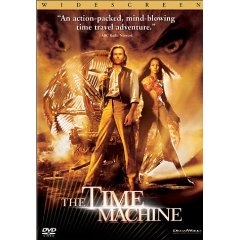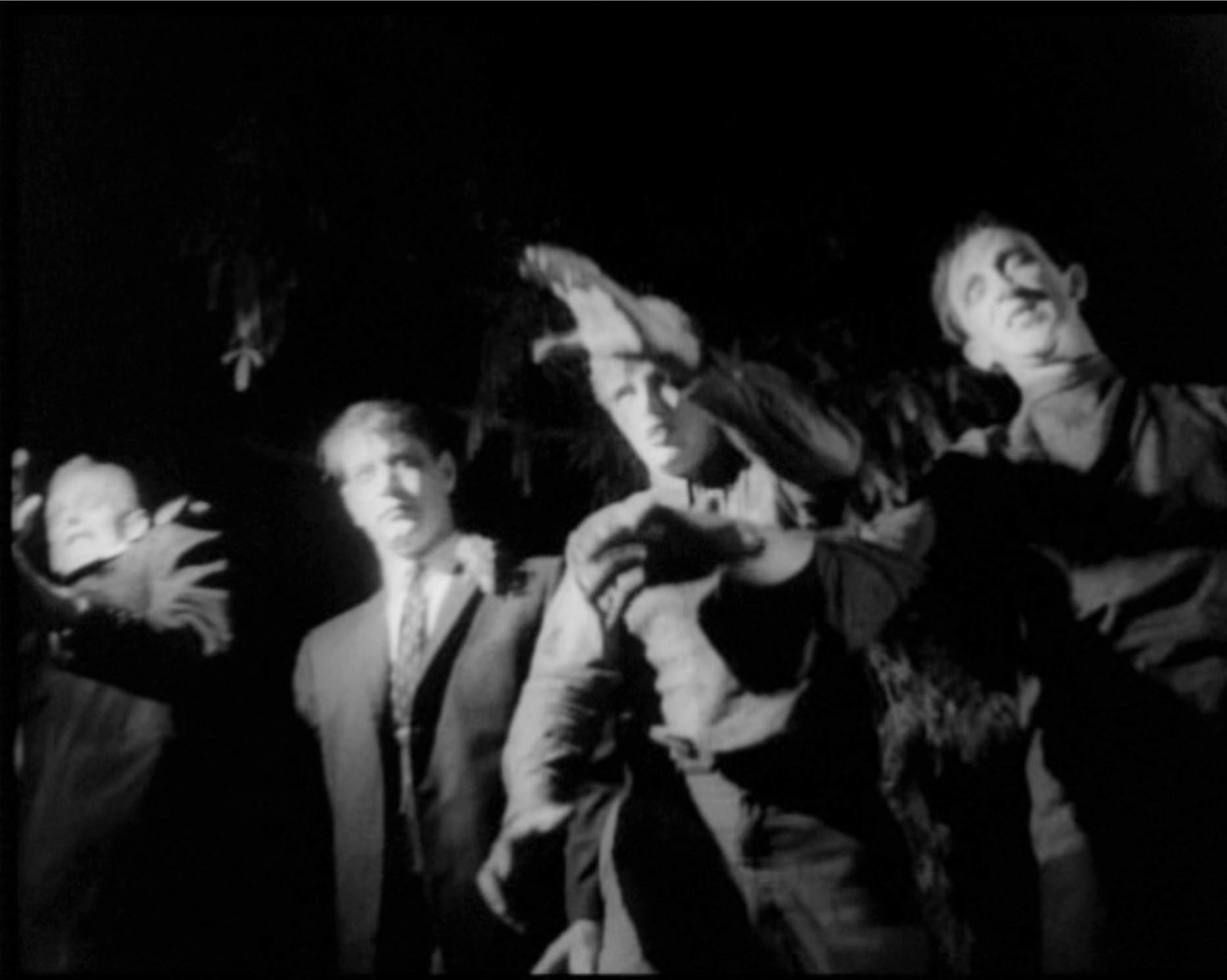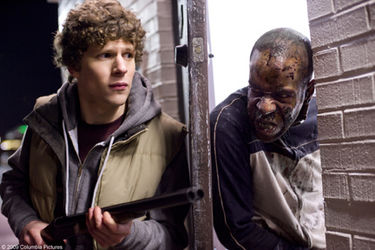 It’s rare that audiences get treated to good horror movies. Luckily, a filmmaker or two comes around to deliver one. Off the top of my head only a few flicks of the last year even come to mind. “Drag Me to Hell” was a return to form for Sam Raimi fans, and while it’s arguably a straight-up comedy, “Zombieland” was a solid dose of fun. “The Crazies” hits screens as a remake of a George A. Romero film from 1973 that most (including me) haven’t seen. So taken on its own terms, this 2010 film works adequately at what it’s setting out to do.
It’s rare that audiences get treated to good horror movies. Luckily, a filmmaker or two comes around to deliver one. Off the top of my head only a few flicks of the last year even come to mind. “Drag Me to Hell” was a return to form for Sam Raimi fans, and while it’s arguably a straight-up comedy, “Zombieland” was a solid dose of fun. “The Crazies” hits screens as a remake of a George A. Romero film from 1973 that most (including me) haven’t seen. So taken on its own terms, this 2010 film works adequately at what it’s setting out to do.
The film opens during a little league baseball game. A rigid old man, formerly the town drunk, walks onto the field with a rifle in hand. Timothy Olyphant, the bland star of “Live Free or Die Hard” and “Hitman,” and the bright spot of “A Perfect Getaway” and “The Girl Next Door,” plays small-town officer David Dutton. He confronts the man only to find himself staring down the barrel of the gun before having to make a split-second decision. He discharges his sidearm and takes the old man’s life. From here on out, the town becomes stricken with multiple obscure cases involving individuals going mad and attempting/committing murder. Dutton and his trusted deputy soon discover something has gone terribly wrong with the town’s water supply, turning its inhabitants into vicious killers before becoming zombie-like monsters. Eventually the whole area becomes quarantined by the U.S. army, and Dutton must fight to protect his wife and unborn child.
Of the many recent zombie films, “The Crazies” fits right in. I know many horror buffs claim that this isn’t exactly a “zombie” film because the infected people have some form of human consciousness–but come on, they get an infection, start attacking people, and turn into the perfect visual aid of a zombie. So if I continue to refer to them as such you’ll just have to deal with it. While I wouldn’t say this movie ranks quite as high as “28 Weeks Later” or the 2004 “Dawn of the Dead,” it’s a close call. Director Breck Eisner (of the forgettable 2005 “Sahara’) knows how to instill some raging intensity in a scene. Granted, most of the sequences here have a certain familiarity and standardization to them especially within the genre, but he isn’t simply selling truckloads of gore. Sure, there is some of that, but he never forgets that the horror rests not ultimately with the zombies, but with human versus human confrontation. The most interesting aspect of “The Crazies” is the fact that there is some form of humanity left in these monsters. They have thoughts and memories, but with a damaged mind–driven to murder. M. Night Shyamalan should have waited and taken notes from this film when developing the atrocious “The Happening.” “The Crazies” also features a few memorable scenes, making it more than disposable horror, and ones concerning ‘the living dead.’ The tone of the movie never falters, and it also never loses sight of moral questions and dilemmas, providing the right commentary to give reason for the movie. It’s still not a spectacular movie, or the horror film to reinvent the genre, but with solid performances across the board, excellent cinematography and unnerving tension the whole way through, “The Crazies” makes a standard zombie affair quite entertaining.
[Rating:3.5/5]
-MJV & the Movies
 In 1894, H.G. Wells published his novel The Time Machine, which, while short and simplistic, was in interesting thought experiment regarding mankind’s hopes for the future. Wells, a student of Marx, expressed a belief through metaphor that there could never be true equality, and there would always be those above, and those who served them. None the less, he told an ironic tale of how those on top would eventually get theirs.
In 1894, H.G. Wells published his novel The Time Machine, which, while short and simplistic, was in interesting thought experiment regarding mankind’s hopes for the future. Wells, a student of Marx, expressed a belief through metaphor that there could never be true equality, and there would always be those above, and those who served them. None the less, he told an ironic tale of how those on top would eventually get theirs. 1960. A second version, starring Guy Pierce and Directed by Simon Wells, H.G.’s grandson, was released in 2002. I have yet to meet someone, besides me, who has read/seen all three versions, which is really too bad. People often ask me which version is the best. The truth is, it’s really hard to pick one, because they are all so different, and each one is strangely apropriate to their time. You might say, reading the book and then watching the movies is a trip through time in itself. I’ll explain.
1960. A second version, starring Guy Pierce and Directed by Simon Wells, H.G.’s grandson, was released in 2002. I have yet to meet someone, besides me, who has read/seen all three versions, which is really too bad. People often ask me which version is the best. The truth is, it’s really hard to pick one, because they are all so different, and each one is strangely apropriate to their time. You might say, reading the book and then watching the movies is a trip through time in itself. I’ll explain. In the book, the “Time Traveller,†who is never named, believes that if he travels far enough into the future, he will find mankind in a perfect state. No further explanation of this belief is ever given. Wishing to see mankind’s triumph, his first time-trip is a non-stop journey to the year A.D. 802,701. (Does this seem strange to anyone else? I mean, there’s a reason the Wright Bothers didn’t take their first flight over the Grand Canyon, and early sailors didn’t try to cross the Atlantic.) Once he stops, the Time Traveller first meets the Eloi, a society of childlike people. They live in small communities in futuristic yet deteriorating buildings, doing no work and eating a frugivorous diet. His efforts to communicate are hampered by their lack of curiosity or discipline, and he concludes that they are the result of humanity conquering nature with technology, and adapting to an environment in which strength and intellect are no longer advantageous.
In the book, the “Time Traveller,†who is never named, believes that if he travels far enough into the future, he will find mankind in a perfect state. No further explanation of this belief is ever given. Wishing to see mankind’s triumph, his first time-trip is a non-stop journey to the year A.D. 802,701. (Does this seem strange to anyone else? I mean, there’s a reason the Wright Bothers didn’t take their first flight over the Grand Canyon, and early sailors didn’t try to cross the Atlantic.) Once he stops, the Time Traveller first meets the Eloi, a society of childlike people. They live in small communities in futuristic yet deteriorating buildings, doing no work and eating a frugivorous diet. His efforts to communicate are hampered by their lack of curiosity or discipline, and he concludes that they are the result of humanity conquering nature with technology, and adapting to an environment in which strength and intellect are no longer advantageous.







 In the 2002 version, which also starts in 1899, the time traveller is Alexander Hartdegen, a physics professor who wants his students to abandon the expectations of society and conquer nature with technology. His fiance, Emma (Sienna Gullory), feels like he’s more attracted to model T cars than to her. Philby (Mark Addy) asks Alexander if he thinks Man could ever go too far whith technology. Alex scoffs “No such thing.†That night Emma is killed by a mugger in the park. He decides to use his skill with technology to change the past and bring her back. He works for four years on a time machine. When it’s complete, he
In the 2002 version, which also starts in 1899, the time traveller is Alexander Hartdegen, a physics professor who wants his students to abandon the expectations of society and conquer nature with technology. His fiance, Emma (Sienna Gullory), feels like he’s more attracted to model T cars than to her. Philby (Mark Addy) asks Alexander if he thinks Man could ever go too far whith technology. Alex scoffs “No such thing.†That night Emma is killed by a mugger in the park. He decides to use his skill with technology to change the past and bring her back. He works for four years on a time machine. When it’s complete, he










 What is with all these zombie movies?? Is our culture really so morbid that we can’t get enough of seeing human bodies hacked to pieces? Zombieland (Dir. Ruben Fleischer) is only the latest in a veritable flood of ketchup-splattered, limb-laden flicks from the past few years in which humans are transformed into flesh-eating monsters and terrorize the few souls unaffected by the radiation, virus, or whatever.
What is with all these zombie movies?? Is our culture really so morbid that we can’t get enough of seeing human bodies hacked to pieces? Zombieland (Dir. Ruben Fleischer) is only the latest in a veritable flood of ketchup-splattered, limb-laden flicks from the past few years in which humans are transformed into flesh-eating monsters and terrorize the few souls unaffected by the radiation, virus, or whatever.






 In one of the most important chapters in Bram Stoker’s novel “Dracula,†Lucy Westenre tells the story of how she received three marriage proposals in one day. We gain a chuckle by reading it, but we also learn how good Lucy’s heart is and how kind and humble she is, as well as see the character of her suitors.
In one of the most important chapters in Bram Stoker’s novel “Dracula,†Lucy Westenre tells the story of how she received three marriage proposals in one day. We gain a chuckle by reading it, but we also learn how good Lucy’s heart is and how kind and humble she is, as well as see the character of her suitors.
